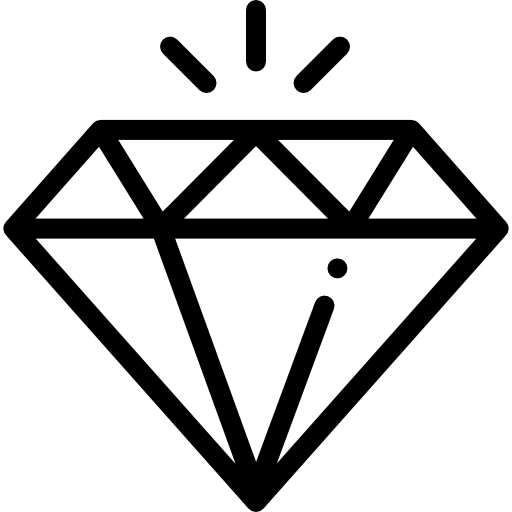DIAMONDS
DESIGN YOUR OWN DIAMOND BRACELETS
DIAMOND EDUCATION
What is a GIA Diamond Report?
A GIA Diamond Grading Report is a document that the Gemological Institute of America (GIA) provides after a thorough and meticulous examination of your diamond. It provides information for every important characteristic of your diamond. There is more to your diamond than its cut, color, clarity, and carat weight. Every single diamond is unique. In fact, each one was exposed to different conditions and natural elements when it formed beneath our Earth’s crust, and is also susceptible to wear and tear above the surface– so every individual scratch, inclusion, blemish, and identifier that is unique to your diamond may appear on this document.
During a diamond evaluation, GIA’s Graduate Gemologists inspect each diamond under an industry standard 10 power microscope to determine the stone’s unique characteristics, including the 4C’s (i.e. carat weight, color, clarity and cut) and more.
Let’s Break It Down
So now that we know what a Diamond Grading Report is, what about the finer points? What are all the different factors that gemologists look for when grading your diamond, and what do they mean? Let’s examine what’s in a Diamond Grading Report.
Your GIA Diamond Grading Report Includes:
GIA Report Number:
A GIA Report Number is a unique report identification number issued by the GIA for each evaluated diamond. You can refer to this number if you’re looking to sell your diamond.
Shape and Cutting Style
Shape and cutting style is defined by the shape in which the diamond was cut. Some of the most common diamond shapes include:
- Round Brilliant Cut
- Pear Shape
- Emerald Cut
- Oval
- Marquise
- Cushion Cut
- Old European Cut
- Rose Cut
Measurements:
Measurement is defined by a diamond’s length, width, and depth, always measured in millimeters.
Cut:
Cut is defined by the angles and proportions of the different facets on the diamond in relation to each other. Each diamond is graded on how well it is cut. The proportions of the angles of each facet impact the way a diamond reflects light, attributing to its brightness, fire, and scintillation – or what most would refer to as its ‘sparkle’. Most diamonds with an excellent GIA cut grade tend to have tremendous life and brilliance. Diamonds with poor GIA cut grades have far less interaction with light and can appear dull and lifeless.
The GIA grading scale for cut from best to worst is:
- Excellent
- Very Good
- Good
- Fair
- Poor
Color Grade:
Most diamonds are graded on a colorless scale. Colorless diamonds are categorized by the absence of any color (a yellow, brown, or grey hue can be from natural elements, such as nitrogen, inside the stone.) White diamonds are rarer and more highly sought after, so less color translates into greater value. For Fancy Color Diamonds, the opposite is true: In most cases, the more saturated the color, the more valuable a diamond can be.
The Color Grade for Colorless diamonds uses the alphabet to establish its scale, starting with D and going through to XYZ. D colors are colorless and sit at the top of the scale. E and F color diamonds are next and are still considered colorless diamonds, though they have a very minute hue. G – J color diamonds start to emit a subtle yellow color. K and lower start to have a very strong yellow hue, and when we go further down the scale to XYZ, diamonds exhibit a lot of color.
Clarity Grade:
Clarity Grade is defined by the absence of any inclusions or blemishes on or inside of the stone. The less imperfections the diamond has, the better its clarity is.
Inclusions are natural flaws located within the diamond and might be the result of overwhelming heat and pressure that the gemstone experienced during its formation. Other inclusions are the result of foreign materials getting caught in the diamond growth.
Examples of inclusions are crystals, feathers, black carbon spots, and graining. Blemishes that appear on the outside of a diamond are usually the result of human wear and tear. Blemishes include chips, abrasions, and surface scratches.
When gemologists grade a diamond’s clarity based on the GIA clarity scale, the size, type, number, and position of these imperfections all matter.
The GIA grading scale for clarity from best to worst is:
- Flawless (F)
- Internally Flawless (IF)
- Very Very Slightly Included (VVS1, VVS2)
- Very Slightly Included (VS1, VS2)
- Slightly Included (SI1, SI2)
- Included (I1, I2, I3)
Carat Weight:
Today, a carat approximately equals the weight of a paperclip: 0.2 grams or 200 milligrams. Carat weight is a uniform measurement worldwide, regardless of the measurement system a country typically uses.
Gemologists and Jewelers also use a point system to refer to diamond carat weight. Here is how it works:
* 50 points = 0.5 carat
* 100 points = 1 carat
* 500 points = 5 carat


